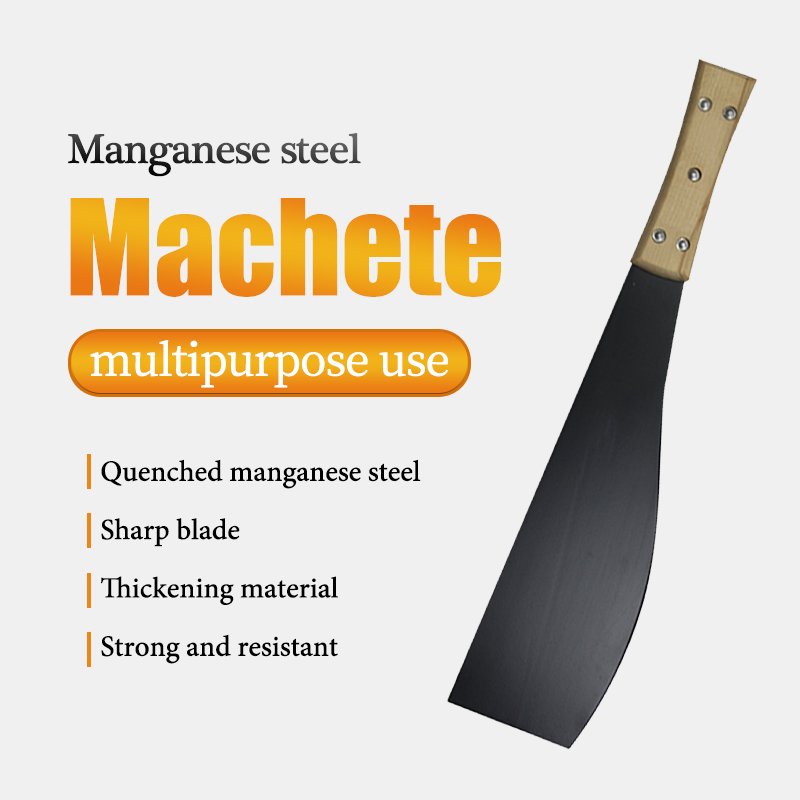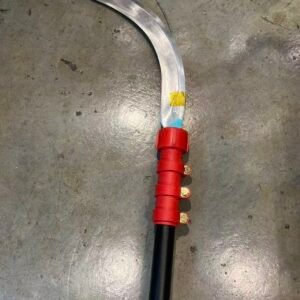1. Understanding the Role of the Machete Sugarcane Tool in African Farming
In many African regions, particularly across East, West, and Central Africa, sugarcane farming remains a critical part of the agricultural economy. Whether cultivated by smallholder farmers or larger commercial operations, sugarcane harvesting often depends on the practical and economical use of hand tools—most notably, the machete sugarcane tool.
Unlike fully mechanized farms seen in industrialized nations, African farms frequently operate on uneven terrain with limited access to expensive machinery. In these conditions, the machete becomes an indispensable asset, allowing workers to cut, trim, and process sugarcane with efficiency and precision. Its portability, simplicity, and adaptability to different cutting techniques make it highly suitable for African field conditions.
Machete sugarcane tools are particularly well-suited to selective harvesting, where only mature stalks are removed. This helps ensure longer productivity from individual plants and minimizes crop waste. Moreover, with skilled labor, a properly designed machete offers high-speed harvesting without compromising on safety or cane quality.
In countries like Kenya, Nigeria, Uganda, and Ghana, the machete remains the most accessible and widely used tool for sugarcane cutting. It supports local employment, requires minimal maintenance, and integrates easily with other traditional farming practices. This enduring role underscores the importance of selecting a high-quality machete specifically designed for sugarcane work—one that is sharp, durable, and ergonomically constructed for extended use under hot and humid field conditions.
As African farmers seek cost-effective ways to boost productivity, investing in the right machete sugarcane tool continues to be a smart and necessary decision.

2. What Knife Is Used to Cut Sugarcane? Choosing the Right Machete Cutting Sugar Cane Tool
When it comes to harvesting sugarcane, not all cutting tools are created equal. The ideal machete cutting sugar cane tool must be purpose-built to handle the density, fibrousness, and height of sugarcane stalks. In African agricultural settings, where manual labor remains the standard, choosing the right knife directly impacts harvesting efficiency and worker fatigue.
The most widely used styles include the Cane Knife, which features a straight or slightly curved blade with a hooked tip for pulling cane, and the Panga Machete, known for its broad blade and forward-weighted design. These tools are especially effective in African conditions due to their ability to deliver powerful, clean cuts through thick stalks.
Another popular variation is the Colima-style machete, with a longer reach and double-edged design, allowing farmers to both slice and strip cane in one motion. Meanwhile, the curved sugarcane machete is often favored in wetter climates for its fluid cutting motion and ease of maneuvering between tight rows of sugarcane.
Key features to consider when selecting a machete cutting sugar cane tool include:
- Blade Length: Typically between 18 to 24 inches for optimal reach and control.
- Steel Composition: High-carbon or manganese steel ensures edge retention and corrosion resistance.
- Handle Design: Non-slip, contoured grips reduce strain and increase handling safety.
In summary, the right knife for sugarcane cutting is one that matches the physical demands of the crop and the worker. It should combine strength, sharpness, balance, and safety. For African farm operators, selecting an optimized machete cutting sugar cane tool is more than a matter of preference—it’s a strategic choice for seasonal success.

3. Key Features to Look for in a Durable Machete Sugarcane Tool
In high-volume sugarcane farming, especially across Africa’s hot and humid climates, durability is paramount. A well-built machete sugarcane tool must endure hours of cutting dense stalks without bending, dulling quickly, or causing user fatigue. For field professionals and agricultural cooperatives alike, understanding the essential features of a high-performance machete is critical.
1. Blade Material and Construction
The core of any sugarcane machete is its blade. Look for tools forged from high-carbon steel or 65Mn manganese steel—materials known for edge retention and resistance to chipping. Blades should be heat-treated to achieve an optimal hardness rating, ensuring longevity even under continuous fieldwork.
2. Blade Shape and Thickness
A good sugarcane machete typically features a broad, flat blade for sweeping cuts. The edge should be straight or gently curved, with a thickness between 2.5mm and 4mm for balance between flexibility and cutting power. Thicker blades are better for heavy-duty use, while thinner profiles allow for faster swing speed.
3. Ergonomic Handle Design
Handles matter as much as blades. Look for handles made from hardwood, polypropylene, or TPR (thermoplastic rubber), offering anti-slip and shock-absorption capabilities. For African farmers who spend full days in the field, comfort and grip security are vital to prevent hand strain and reduce accidents.
4. Corrosion Protection
Due to exposure to moisture and sap, the machete sugarcane blade should be treated with anti-rust coatings like black oxide, powder coating, or clear lacquer. This ensures the blade remains clean, sanitary, and sharp throughout its lifespan.
5. Ease of Maintenance
Field tools must be easy to sharpen and clean. A good machete should respond well to file sharpening, and its simple structure should enable easy replacement of handles or protective sheaths when needed.
By focusing on these core attributes, farm operators can ensure they’re equipping workers with tools that deliver performance, safety, and long-term value.

4. Our Factory’s Recommended Machete Cutting Sugar Cane Models
As a trusted supplier of agricultural hand tools, our factory specializes in providing high-performance types machete cutting sugar cane solutions tailored for the demands of African farming. With over a decade of export experience and a focus on durability, our machetes are designed for the rugged tasks of sugarcane harvesting across diverse terrains and climates.
Featured Models:
- Panga Cane Machete (22″ Blade)
Designed with a wide, forward-weighted blade, this model delivers deep, efficient cuts. Ideal for use in East and Central Africa where thick sugarcane stalks require power over precision. - Curved Sugarcane Knife (18″)
Features a contoured edge and lightweight design for agile cutting in dense cane fields. The curved profile helps with quick stripping and trimming. - Straight Edge Cane Knife with Hook Tip
A hybrid model combining slicing power with a hooked end for pulling stalks. Frequently used in West Africa where manual bundling and hauling are part of the process.
Product Advantages:
- Custom Blade Sizes: From 16 to 24 inches depending on user preference
- OEM Branding: We support logo engraving and private label packaging
- Durable Materials: High-carbon or 65Mn steel options, heat-treated
- Handle Options: Wooden, plastic, or rubberized anti-slip grip handles
- Bulk Supply Capacity: Large-scale production ensures steady supply for wholesale or tenders
We also offer custom development for buyers requiring specific features based on local farming practices. Whether it’s adjusting the blade curve, reinforcing the spine, or adding a specialized coating, our engineering team works closely with clients to create the ideal machete sugarcane tool.
We currently serve clients across Kenya, Nigeria, Ghana, Tanzania, and Ethiopia—partnering with local distributors, agri-projects, and farming cooperatives. Our goal is to empower field workers with machetes that are sharp, safe, and built to last.




